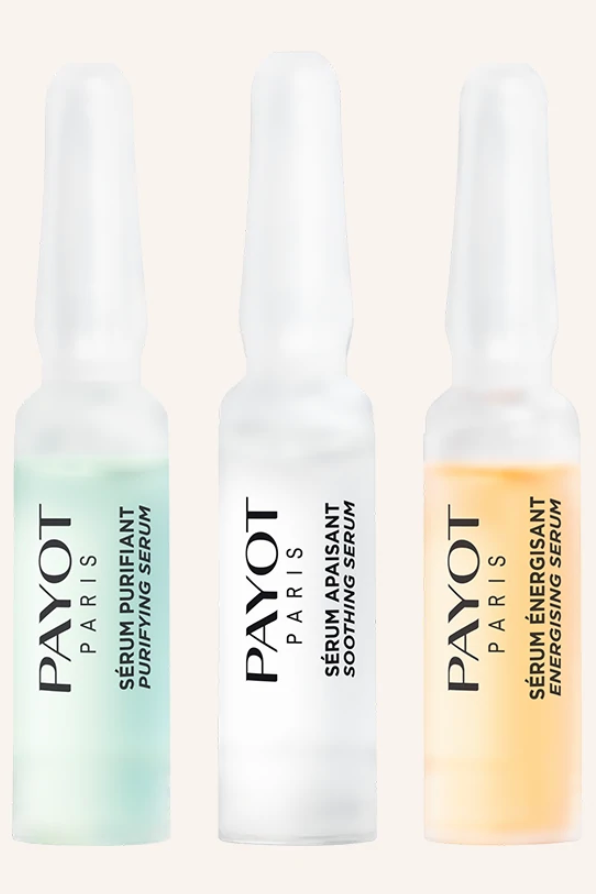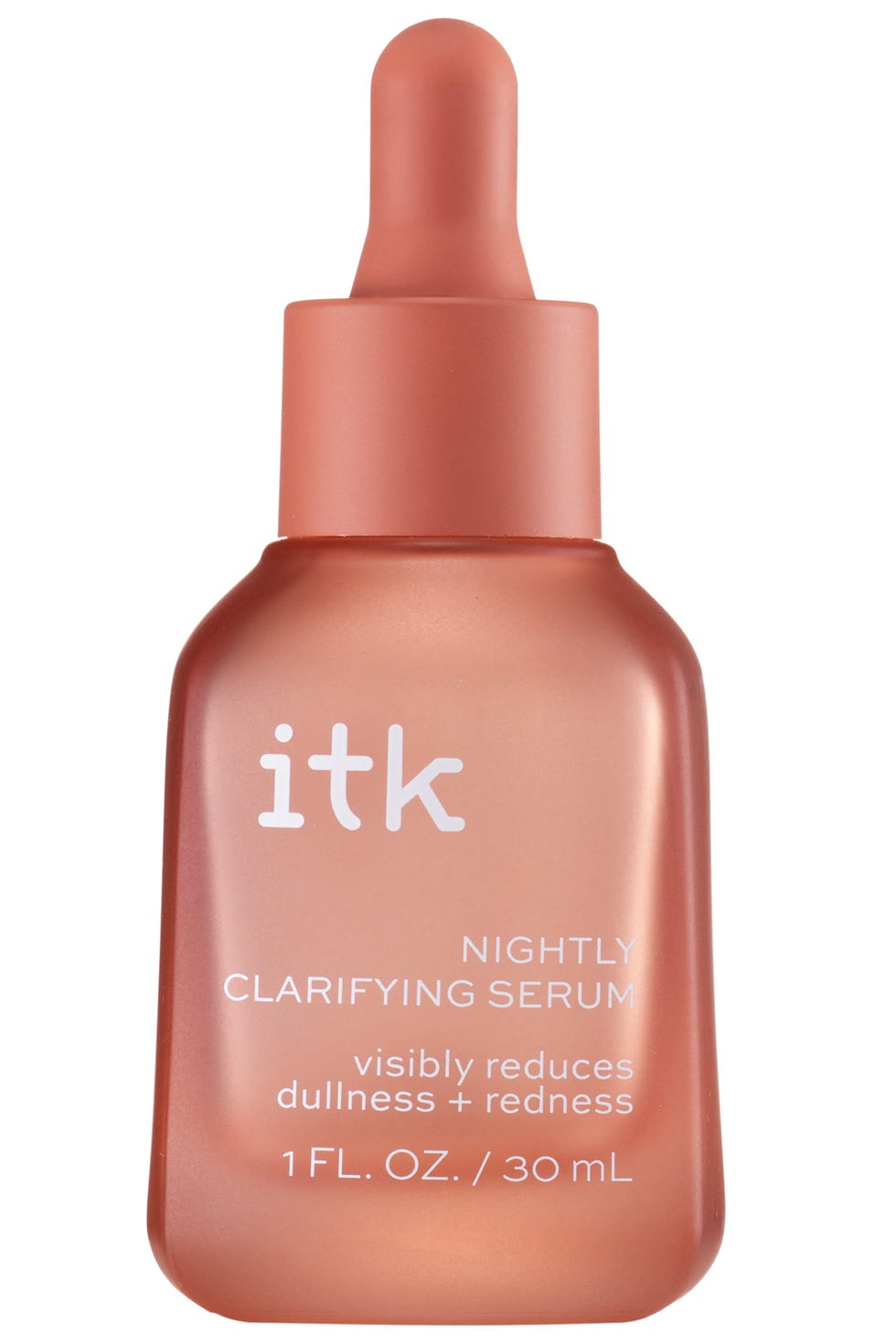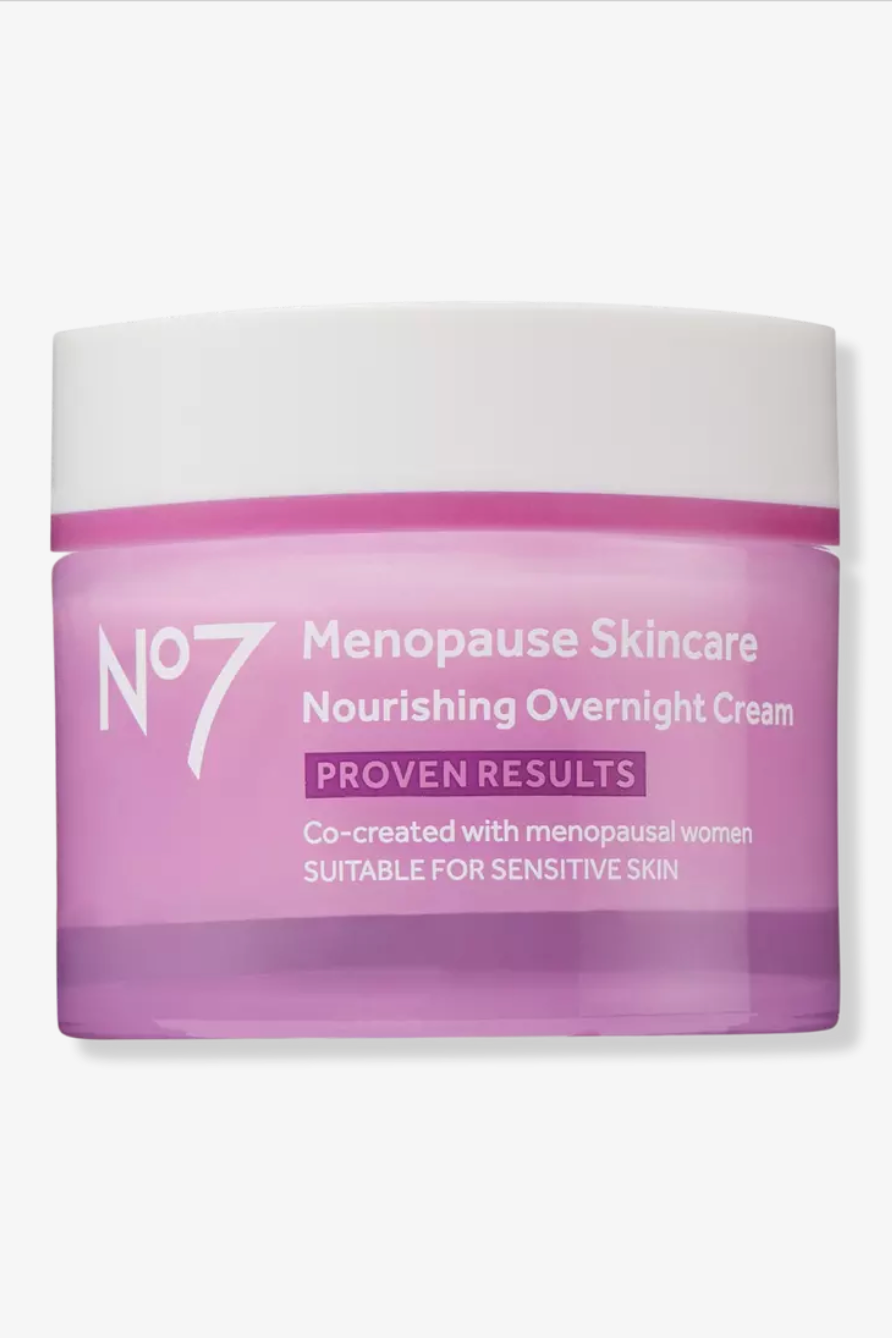Collectively, hormones act as your body’s conductor—a group of behind-the- scenes powerhouses that influence nearly everything from your energy levels to your appetite. Skin, too, is subject to the whims of these potent chemical messengers (think of that sudden breakout that serves as a reminder to stock up on tampons). Generally, this tight relationship is a good thing: “Hormones stimulate oil glands and follicles to lubricate skin and grow hair,” says Jessie Cheung, MD, a dermatologist in Chicago. “They’re also necessary to maintain skin health.”
But things can go a little haywire because your skin is packed with receptors that react to changes, triggering things like acne, wrinkles, and so forth. Puberty is probably the first time you noticed this (hello, zits, nice to meet you), but the ups and downs keep coming, even when you’re fully settled into adulthood. The encouraging news? A few tweaks to your routine help you stay glowy for good.
Big Shift: Pregnancy
In the first trimester, you’re likely dealing with a spike in progesterone, which preps your uterus for a baby. “Progesterone can increase oil production and bouts of acne,” says Melissa K. Levin, MD, a dermatologist in New York City. The response can be unpredictable, though, which is why you could be breakout central while your pregnant friend is positively radiant. Estrogen also rises during pregnancy, and that, combined with progesterone, can contribute to the formation of melasma, which appears as dark brown spots or patches.
How to handle it: Treatment options are limited since many classic acne-fighting ingredients, like retinoids, salicylic acid, and benzoyl peroxide, are off-limits. You’re not totally out of solutions, though. If you’re dealing with stubborn acne, Dr. Levin recommends azelaic acid, which helps with both breakouts and pigment. Worth a shot as well: lactic acid and sulfur, which help keep pores clear. You can also ask your doctor about topical antibiotics, like clindamycin, which is pregnancy-safe. Melasma is another convo since it’s both chronic and multifactorial. Long-term management may include Rx options like hydroquinone and oral meds (you’ll have to wait until you’re done breast- feeding). Sun is another major factor in melasma, so load up on SPF.
Big Shift: Major Life Changes
External stressors (think divorce, moving, living through a worldwide pandemic) trigger a domino effect within the body that contributes to a shift in hormones, says Dr. Levin. “Increased chronic stress can up androgens like testosterone, which stimulates production of pore-clogging oil,” she says.
How to handle it: Retinoids, including over-the-counter retinol and prescription-strength retinoids, are the gold standard for offsetting acne. “They help expedite skin-cell turnover to minimize and prevent clogging buildup,” says Dr. Levin. “Certain retinoids, like adapalene, can also be anti-inflammatory and help treat post-acne marks.” She recommends pairing them with antibacterial agents such as benzoyl peroxide (which kills the acne-causing bacteria) or gentle exfoliants like salicylic acid, to keep dead skin cells from sticking together and potentially forming clogs. Oral medications are also an option. Spironolactone is a popular one; it regulates testosterone sensitivity on the skin by decreasing the amount of a specific type of testosterone, Dr. Levin says. And, of course, good stress-handling habits, like getting enough sleep and exercising regularly, will also help.
Big Shift: Perimenopause
This is the transitional time leading up to meno (which is when your estrogen and progesterone officially call it a day) and hormones are fluctuating wildly. “That new imbalance can cause dryness,” says Dr. Levin. And since estrogen drives the formation of structural proteins like collagen and elastin, dips lead to losses in both, often making for more fine lines. With estrogen AWOL, testosterone will dominate, says WH advisor Mona Gohara, MD, an associate clinical professor of dermatology at Yale University. That may bring on breakouts and rosacea.
How to handle it: Since skin might be at its driest ever, “everything you do should be rooted in hydration,” says Dr. Gohara, who recommends products with humectant ingredients such as glycerin and hyaluronic acid. To address lines, try a collagen-stimulating retinoid. Topical ingredients that activate estrogen receptors in skin, like methylestradiolpropanoate, or MEP, have been shown in studies to improve dryness, dullness, and laxity.
Big Shift: The (Final) End Of Your Cycle
After menopause, you’re no longer dealing with the estrogen and progesterone ups and downs, so “you’ll lose a good amount of collagen,” says Dr. Levin. That can cause deeper wrinkles and lax skin. The upside: The chance of breakouts goes way down—so if you’ve dealt with adult acne, this might be your clear, calm moment.
How to handle it: Look for peptides in your skin-care products (scan the ingredient label). “They’re the building blocks of certain proteins that drive an increase in collagen,” says Dr. Levin. (In other words, they give your skin the materials to create more of it.) She also recommends antioxidants, which help repair and defend against damage, as well as growth factors, proteins produced by our cells that regulate cell growth, maintain tissue, and contribute to the repair and production of collagen. This might also be a good time to consider in-office treatments such as lasers, radiofrequency, and microneedling. These procedures create controlled, microscopic injuries to skin to trigger new collagen
production—and may create a more pronounced effect than products alone, says Dr. Levin.
Deanna Pai is a freelance beauty writer and editor currently based in New York. She has more than 10 years of experience writing about beauty and wellness.









